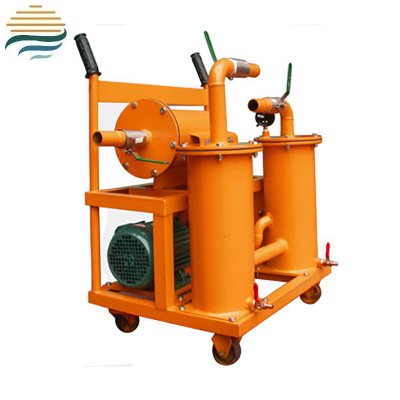How to Check Transformer Oil?
Transformer oil is a critical component in power transformers, serving functions such as insulation and cooling. Regular and proper checks of transformer oil are essential to ensure the reliable operation of transformers and the overall stability of the power grid. Here are the key steps and methods for checking transformer oil.
Pre - inspection Preparations
Before starting the
insection, it is crucial to ensure safety. Make sure the transformer is de - energized and isolated according to safety procedures. Wear appropriate personal protective equipment, including gloves and safety glasses. Additionally, gather the necessary tools and equipment, such as sampling containers, testing kits, and meters.
Visual Inspection
Oil Level Check
The first step in a visual inspection is to check the oil level. Most transformers are equipped with a sight glass or an oil - level indicator. The oil level should be within the marked range on the indicator. A lower - than - normal oil level may indicate a leak in the transformer tank or fittings. This could be due to a damaged gasket, a crack in the tank, or a loose connection. A high oil level, on the other hand, might be a sign of internal problems, such as excessive heating causing the oil to expand beyond normal limits.pColor and Clarity Examination
Examine the color and clarity of the oil. Fresh, clean transformer oil typically has a clear or light - yellow appearance. If the oil appears dark, cloudy, or has a sludge - like consistency, it could be a sign of trouble. Darkening of the oil may indicate oxidation, which occurs when the oil is exposed to high temperatures or oxygen for an extended period. Cloudiness can be a result of moisture ingress or the presence of contaminants. Sludge formation is often associated with the breakdown of oil additives and the accumulation of oxidation products.
Sampling and Laboratory Analysis
Sampling Procedure
Taking a representative sample of the transformer oil is a vital part of the inspection process. Use a clean, approved sampling container to collect the oil. The sampling point should be selected carefully to ensure that it represents the overall condition of the oil in the transformer. For example, samples are often taken from the bottom of the transformer tank, as contaminants and moisture tend to settle there. Before sampling, clean the sampling port to prevent any external contaminants from entering the sample.
Dielectric Breakdown Voltage Test
One of the most important laboratory tests is the dielectric breakdown voltage test. This test measures the ability of the oil to withstand electrical stress. A high - voltage source is applied to the oil sample, and the voltage at which the oil breaks down and conducts electricity is recorded. A lower dielectric breakdown voltage compared to the manufacturer's specifications or previous test results indicates a degradation in the oil's insulating properties. This could be caused by moisture, contaminants, or the breakdown of the oil's molecular structure due to aging or overheating.
Acidity Test
Over time, transformer oil can become acidic due to oxidation. Measuring the acidity of the oil, usually expressed as the acid number, helps assess its condition. An increase in the acid number indicates that the oil is deteriorating. Acidic oil can corrode the internal components of the transformer, such as the windings and the metal tank. This corrosion can lead to reduced electrical performance and, in severe cases, equipment failure.
Dissolved Gas Analysis (DGA)
Dissolved gas analysis is a powerful diagnostic tool. It involves analyzing the types and amounts of gases dissolved in the oil, such as hydrogen, methane, ethylene, and acetylene. Different types of faults within the transformer, such as overheating of the windings, arcing, or partial discharges, produce specific patterns of gases. For example, high - temperature overheating may result in the formation of methane and ethylene, while arcing can generate acetylene. By analyzing these gas patterns, technicians can identify potential problems within the transformer and take appropriate preventive measures.
Moisture Content Measurement
Moisture in transformer oil is highly undesirable as it can significantly reduce the oil's dielectric strength. There are several methods to measure the moisture content. One common method is using a moisture meter based on the principle of capacitance or impedance. In mineral - oil - filled transformers, the acceptable moisture content is typically below 30 - 50 ppm (parts per million). For ester - based transformer oils, the acceptable limits may be different, usually in the range of 50 - 100 ppm, depending on the type of ester. If the measured moisture content exceeds the acceptable limit, it may be necessary to dry the oil through processes like vacuum dehydration.
Particle Count and Size Analysis
The presence of solid particles in the transformer oil can also affect its performance. Particle counters can be used to determine the number and size distribution of particles in the oil sample. Large or a high number of particles can cause abrasion to the internal components of the transformer, such as the bearings and the moving parts of the cooling system. Additionally, particles can act as sites for electrical breakdown initiation, reducing the overall reliability of the transformer. If a significant number of particles are detected, filtration may be required to remove them.
In conclusion, checking transformer oil involves a combination of visual inspections, sampling, and laboratory - based tests. By regularly performing these checks and accurately interpreting the results, power system operators can detect early signs of oil degradation and transformer problems, ensuring the safe and efficient operation of transformers.





